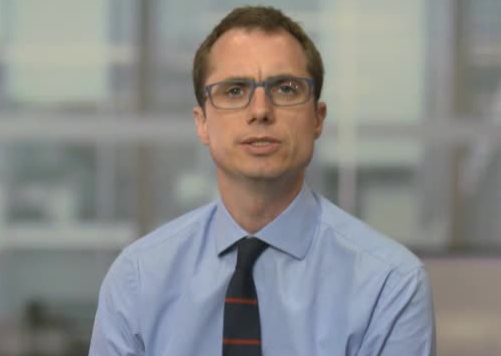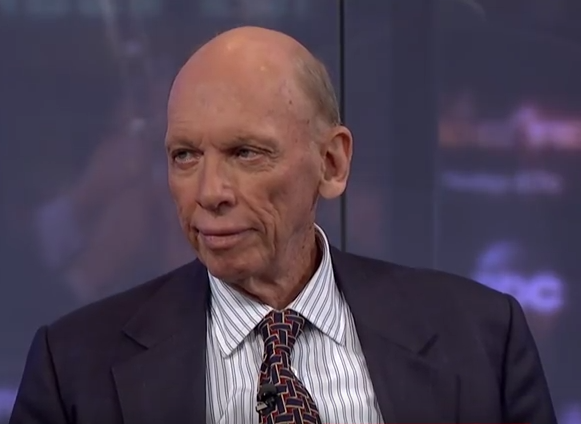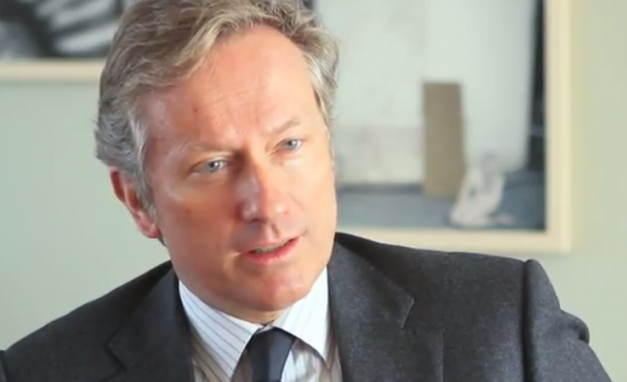More than 10 years ago, Asia Alternatives was founded by Melissa Ma, Rebecca Xu and Laure Wang, the founding partners who met at Harvard Business School and at Goldman Sachs. Since then, the firm has raised four fund of funds (Asia Alternatives Capital Partners I, II, III and IV) dedicated exclusively to investing in Asian private equity and offering primaries, secondaries and co-investments, all within the same vehicle. The firm is a reference and the largest player in the market, with more than US$ 6.5 billion of assets under management and a team of 40 people spread out across offices in Beijing, Shanghai, Hong Kong and San Francisco. According to Preqin, the returns of all its commingled funds are top quartile, the last of which closed oversubscribed at US$ 1.85 billion (including separate accounts) in April of 2015 according to a recent filing. Asia Alternatives is also the first and only foreign firm which as a Limited Partner, has obtained the Qualified Foreign Limited Partner license to partake in the growing RMB market.
During the second week of December, Melissa Ma traveled to Latin America with ROAM Capital (their exclusive placement agent for Latin America) to talk to institutional and private investors about the current market conditions in Asia before their fifth fund, AACP V, comes back to market. Given the good reception and the level of interest witnessed for Asian private equity, a new visit to the region is being planned during the first quarter of the year to visit Brazil, Chile and Peru.
In this interview with Funds Society, Melissa shares her reflections of this first trip, her economic vision of China, and what opportunities and risks Asia Alternatives sees for investing in Asian Private Equity.
The purpose of the trip was to introduce Asia Alternatives to Latin-American investors, and to help them to gain an insight on Asian private equity. Which were the investors’ main concerns about Asia?
We were pleased by the reception we got from the Latin American investors we visited. They were all familiar with emerging market dynamics and were relatively comfortable with the volatility and cycles that can come with investing in Asia, but were also interested in the long term growth potential due to the favorable macro and demographic trends. A common concern among the investors was currency depreciation, which is understandable give the current currency situation in many Latin American countries.
Institutional investor seemed intrigued to learn more about Asian private equity since it’s currently an under represented asset class in their global private equity portfolios. As you would expect, the bulk of the existing exposure is to the US and Europe, but given the increasing importance of the Asian markets (particularly in terms of their contribution to global GDP), investors seemed genuinely interested in diversifying into Asia, particularly in light of the growth opportunities that abound and the alpha generation potential.
According to your opinion, which would be the highlights of this road show? Is there any particularity (segment) of Latin-Americans investors that has brought your attention?
We got strong reception across the board from all investor types on our trip, so can’t really differentiate at this point. The highlight of the trip was many investors sharing their experience in their own countries, especially Colombia, on the political, economic and investment fronts and us learning and drawing parallels to similar experiences in some Asian countries we’ve had. It just shows you that there are similarities emerging markets often share despite being in different parts of the world.
We were also very pleasantly surprised to see that a lot of the large single family offices already had some exposure to Asian private equity, meaning they recognize the importance of investing in the region and have a desire to continue investing in the space.
Economy in Latin America has suffered from the impact of lower commodity prices, and the mentioned deceleration of China´s economy, how relevant are the two economies to each other?
As China has risen to prominence in the last few years as the second largest economy in the world, its economic connection to many regions, including Latin America, has increased. China is today Latin America’s second largest export market, after the United States. China is the number one importer of many types of commodities now and expected to remain as such into the future, so this will continue to be one of the many growing ties between China and Latin America. As commodities are cyclical, there will be phases of volatility, but the longer term trend is clear – China will continue to need more and more commodities and Latin America will continue to be an important source to fuel China’s growth.
We were informed that you entered into an exclusive placement agreement with ROAM Capital, which was the process to select this placement agent?
ROAM Capital, in partnership with Eaton Partners (Asia Alternatives’ placement agent since our inception in 2006), successfully worked with us on the fundraising for our last fund, Asia Alternatives Capital Partners IV, LP, which closed in April 2015. We really appreciate ROAM’s exclusive focus on the private equity asset class and strong on –the ground presence and credibility in Latin America. It is based on this first positive experience that we are now forming a long-term partnership with ROAM for Latin America.
Your firm specializes in funds of funds, how do you select your private equity fund managers?
Our investment strategy is premised around risk-adjusted returns, or compensating investors for the risk associated with investing in Asia private equity. We see three types of risk premiums that investors need to be compensated for when investing in Asia private equity – (1) geographic risk, (2) illiquidity risk and (3) manager risk. We set risk premiums on a regular basis to use as investment hurdles when picking managers and also use them as investment targets for us to deliver to our investors. Our portfolio construction and manager / investment selection follows this risk-adjusted return approach.
The private equity funds invest across buyout, growth, venture capital and special situation funds, is there any particular preference in the final mix?
Following the risk-adjusted return approach described above, Asia Alternatives builds risk diversified portfolios and does not set top-down targets for each asset class. Instead, in quarterly reviews, we determine the current risk-adjusted return outlook for each asset class and adjust allocations accordingly. Our latest portfolio projection would indicate about 30-40% in growth capital, 30-40% in small-mid market buyouts, 15-20% in venture capital and 10-20% in special situations. Our portfolio is also diversified across fund investments, direct co-investments and secondaries.
Your first fund, Asia Alternatives Capital Partners LP, had its final close in May 2007, which were the main drivers to invest in China at that time? The firm has been ten years in the market, what has changed from then?
When we raised our first fund, the investment thesis was centered on building a Pan-Asia portfolio, not just China. We believed then, as we do now, that most investors were under-allocated to Asia, especially in the illiquid portfolio, and it was just a question of “if”, not “when”, investors would need to increase their Asia exposure. Asia is still projected to contribute the largest share of both demographic and economic growth to global population and GDP over the next few decades.
We also believed then, as we do now, that the bulk of the returns in Asia private equity in the foreseeable future would come from small-mid size companies and primarily from growth and small-mid market buyout deals. Asia is not a large or mega buyout market yet. Accessing these companies is a backyard business and you need local, on-the-ground talent. We believe that a private equity portfolio of largely proven local, country-focused managers could produce superior returns over time compared to investing in Pan-Asia large buyout funds, often run by foreign firms. This was how Asia Alternatives’ was born.
A lot has changed in the last 10 years, but the core beliefs around Asia’s long-term growth and the attractiveness of seasoned local private equity managers have stayed true. Over all, Asia has slowly matured over the last decade, especially the emerging markets like China. This has changed the macro outlook for the next 10 years as the major markets of Asia undergo significant reform and transition. On this path, savvy local private equity investors have the opportunity to provide long term, sticky transition capital to take advantage of potential dislocations and change.
Recent data show the Chinese economy slowing down, investment indicators, factory output, and services sectors production are showing a slower growth, which are the most relevant factors behind this trend?
Slower top line GDP growth in China was inevitable. After approximately a decade of continuous double-digit growth, this was simply not sustainable. Near-medium term GDP is projected to be in the 6-7% range, but that is on a much larger base today than 10 years ago, as China has the second largest GDP in the world. The quantum of new economic output being generated each year is still extremely high and places China for the foreseeable future as the fastest growing major economy of scale, as well as being the top contributor to global GDP growth each year.
Asia Alternatives believes that China is entering a phase of slower, more sustainable growth that is more attractive long term. In the prior decade, much of the hyper growth was driven by exports and that was not sustainable. The mix of GDP growth is dramatically shifting over the next decade to be more dominated by domestic consumption. As an example, in the last quarter, domestic consumption contributed approximately 60% to China’s GDP growth, a far cry from the 20-30% contribution from the last ten years. This will be a less volatile, sustainable, longer-term growth model.
Last August, global markets suffered from the turmoil in Chinese financial markets, the decision of the Chinese government to change the exchange rate introduced more volatility, until which extent China´s economy is transitioning from state owned to market owned economy?
China is transitioning to what we call the “New Norm”, which is characterized by three key areas- (1) financial reform, (2) state reform and (3) social reform. Indeed the key tenant behind financial reform is to allow market forces to play a decisive role in China’s economy. The introduction of an exchange rate floating mechanism, interest rate liberalization and stock market reform are all a part of introducing market forces. In the shorter term, it can cause volatility, like we’ve seen in the stock markets, as investors and the economy adjust to the changes, but longer term, these changes are healthy as China transitions to a more market-based economy. In many ways, private equity is more suitable than public equity to take advantage of these transition opportunities as you need long-term, sticky capital.
The firm has offices in Beijing, Shanghai, Hong Kong and San Francisco, what brings each location to the investors?
Our office and team footprint is set to provide optimal on-the-ground coverage for those markets where we think the best risk-adjusted return opportunities exist. Beijing and Shanghai serve as the hubs for our China team. Hong Kong is the home for the India, South East Asia, Japan and Korea teams. San Francisco is a client service office.
In the past all of Asia Alternative´s funds have been largely oversubscribed, what differentiates your firm among your peers?
At Asia Alternatives, we focus every day on a methodical risk-adjusted return approach for our LPs and don’t focus on our competition. We are fortunate to have such a loyal base of investors that have supported us over the least 10 years.
Your team was “nicknamed” as the Wonder Women team (referring to Laure Wang, Rebeca Xu, and yourself) by the Asia Venture Capital Journal, do you think that being a firm founded and managed by women has influenced in any way in the success of the business?
When we first came out in 2005 as a new firm, we were nicknamed many things – “Charlie’s Angels”, “Wonder Women”, “Girl Power”, etc. I think this was because it was so rare to see an all-female founding team in private equity. We are proud of our women co-founders, but even more proud that we have built an outstanding team over the last ten years based purely on meritocracy and talent, bringing all the gender and ethnic diversity with it.









